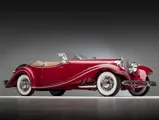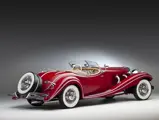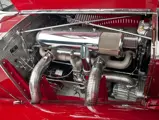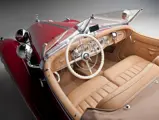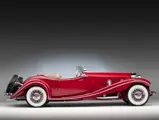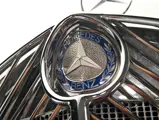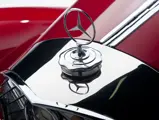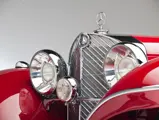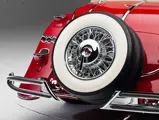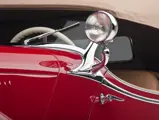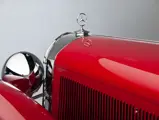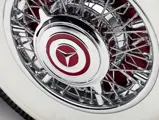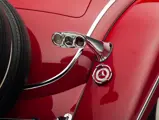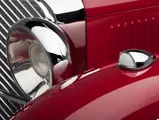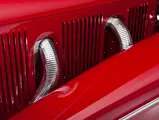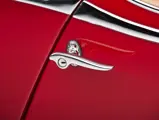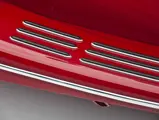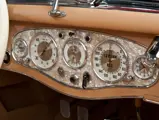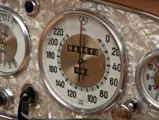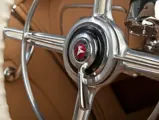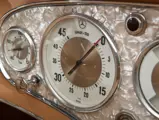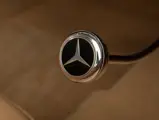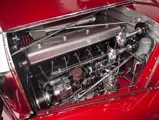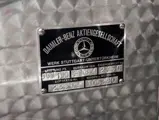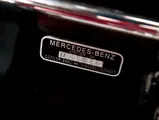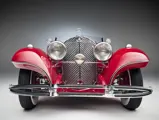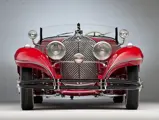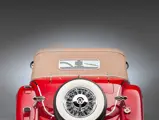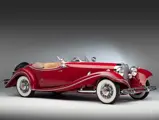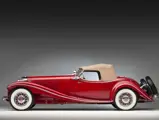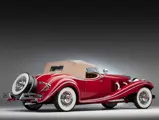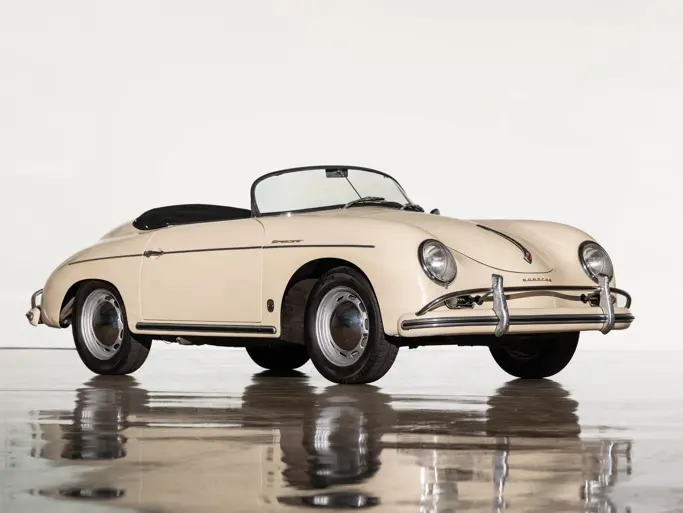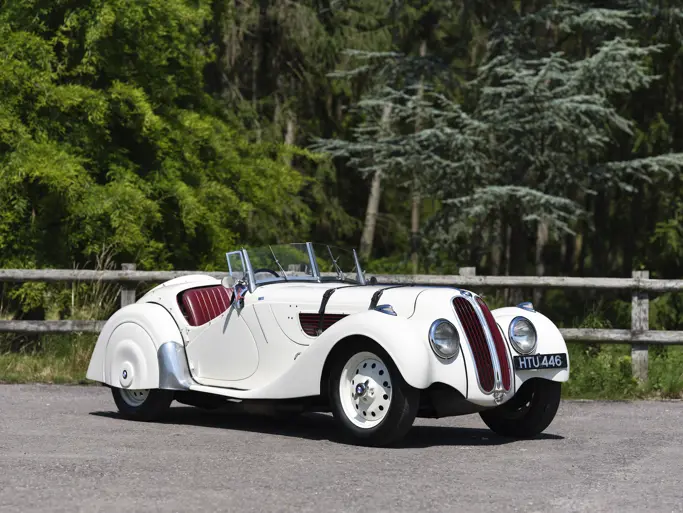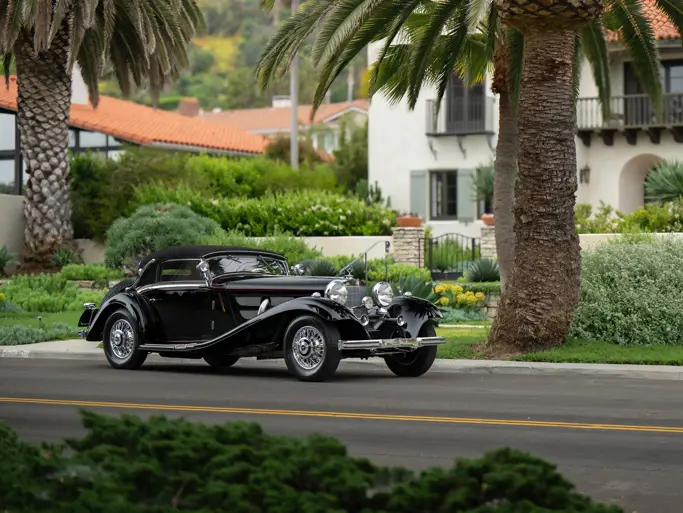Monterey 2011
1935 Mercedes-Benz 500 K Roadster by Sindelfingen
Lyon Family Collection
{{lr.item.text}}
$3,767,500 USD | Sold
 | Monterey, California
| Monterey, California
{{internetCurrentBid}}
{{internetTimeLeft}}

5,018 cc inline eight-cylinder supercharged overhead valve engine, four-speed manual transmission, four-wheel hydraulic drum brakes. Wheelbase: 129.5"
- Offered from the Lyon Family Collection
- 1935 Berlin Motor Show Car
- Rare coachwork on desirable supercharged eight-cylinder Mercedes
- Recent inspection by experts from Mercedes-Benz Classic Germany
At the beginning of the Thirties it became apparent that Mercedes-Benz needed a new model at the top of its product offering. The company took that step at the 1933 Berlin Auto Show with the W 22 model, the 380. Its eight-cylinder engine capitalized on Mercedes-Benz’s successful experience with the S series with a driver-controlled supercharger for short bursts of power for acceleration. It shared its visual lineage with the S also, with a massive vee radiator set back at or behind the front axle centerline and huge Bosch headlights. Four-wheel independent suspension and hydraulic brakes gave unprecedented ride, handling and braking, not only on rough roads but also on the quickly expanding network of improved roads, highways and Autobahns then being constructed throughout Germany.
Reflecting the changing social and political dynamics of the times, Mercedes-Benz designed its newest luxury chassis primarily as an owner-driven automobile. Some, with long wheelbase limousine and enclosed sedan (Innenlenker) bodies, would be chauffeur-driven, but that was now the exception, not the norm. A number of refinements were incorporated in the design and developed through the Thirties on later models, to make owner-driver use easier, simpler and smoother. Manuals were explicit and extensive. Owners’ mechanical knowledge was assumed, but it was not expected to be extensive. Women drivers were not uncommon, and Mercedes-Benz recognized its prestige models were going to driven by owners with a wide range of skills.
Mercedes-Benz’s pride in the 380 was apparent at its introduction. The centerpiece of the display was a meticulously finished show chassis revealing its robust construction and intricacy to full effect. Aluminum surfaces, and there were many of them, were fastidiously engine turned. Every surface and detail was highly polished, painted and detailed to perfection. It was a jewel.
As impressive as it was, however, the 380’s output was at best marginal for the task of powering the ample, luxuriously appointed multi-passenger Tourenwagens and Innenlenkers favored by many of Mercedes-Benz’s wealthy clientele and built to the high, and massive, standards of the Sindelfingen coachworks. Mercedes-Benz quickly recognized its error in judgment and began development of its successor in January 1933, even before the 380 was introduced.
The Mercedes-Benz 500 K
This was the Mercedes-Benz 500 K (W 29, 100/160 hp) destined to be one of the greatest performance automobiles of the Thirties. It was introduced in March 1934 at the Berlin Auto Show, just 13 months after the debut of the 380. Both were built in parallel in 1934, but by the end of the year the 500 K stood alone at the top of Mercedes-Benz’s catalog.
The 500 K had a generously-braced chassis frame boxed within the axle centerlines with fully independent suspension with coil springs using dual A-arms at the front and swing axles at the rear, both fitted with hydraulic lever shock absorbers. Concentric coil springs were added to the rear suspension to pick up higher loads, and later in the 500 K series, horizontal camber compensator springs added another level of control to the swing axles.
The engine was enlarged from that of the 380 with increased bore and stroke. It had inline overhead valves operated by pushrods and rocker arms from a camshaft mounted above the crankshaft on the left side of the cylinder block. The Rootes-style positive displacement supercharger mounted at the front of the engine was activated by the driver when the accelerator pedal was pressed fully to the floor, engaging a multi-disc clutch pack on the engine and forcing air through the carburetor into the cylinders. The unit cylinder block and crankcase were cast in steel with a cast iron cylinder head and an 8-10 liter capacity aluminum oil sump. Output was 100 hp in normal operation and 160 hp at 3,400 rpm with the supercharger engaged.
Later 500 K engines adopted a marvelous rotary-type “Jumo” fuel pump built by aircraft engine manufacturer Junkers, an intricate mechanical gem that ensured adequate fuel flow when the blower cut in and fuel requirements soared.
For the 500 K, Mercedes-Benz retained the four-speed gearbox with direct (1:1) third-speed and a pre-selector type overdrive fourth (Schnellgang, loosely translated as “speed gear”) with a 0.6:1 ratio engaged without using the clutch. The top three speeds were synchronized. The standard rear axle ratio of 5.11:1 of the 380 was raised to 4.9:1 or greater for the 500 K.
Even in standard form the 500 K was lavishly equipped with two spare wheels and tires, safety glass, electric windshield wipers, hydraulic brakes with vacuum booster and 370-mm diameter drums, central lubrication, 12-volt electrical system and a centrally mounted fog light.
500 K production continued for three years, through 1936. 342 examples were built. Of them just 29 were bodied with Roadster and Special Roadster coachwork. Creating a sporting shape on the 500 K’s 129½-inch wheelbase with a hood line high enough to clear the 500 K’s long stroke straight engine topped by its valve gear is a daunting task. Only the most accomplished and sensitive designers have succeeded with similar challenges, and their creations, whether on Mercedes-Benz, Duesenberg, Alfa Romeo or Rolls-Royce chassis, are masterpieces of the artful combination of engineering and design in the integration of disparate masses.
Offered in two successive versions, the first series Spezial Roadster is a true roadster, without rollup windows, with a fully disappearing top and a short tapered tail topped by twin spares set off by stalk-mounted taillights. The Spezial Roadsters’ remarkable coachwork begins with the long hood needed to accommodate the length of the straight-eight engine. Further extending the front of the 500 K, the wheels’ centerline is well forward of the radiator and classic Mercedes-Benz grille, giving an expanse of sweeping fender that introduces and accentuates the hood’s length and severity. The cowl is topped by a steeply swept vee windscreen usually accented by one or two small spotlights. The top of the doors is sculptured in a pleasing curve that emulates the fender’s sweep, the “low door” that accents the 500 K Spezial Roadster’s sporting presence and appeal. The door sweep is accented by a bright molding along its edge which continues from the doors down the sweeping tail. The fender margin is accented by a complementary bright accent that continues over the rear wheel arch and down the fender edge to the tail’s margin. It creates a harmonious design that blends the car’s mass into an integrated whole that belies its size when seen without familiar objects to give scale.
Chassis no. 105380
The car offered here was completed February 6, 1935 at Sindelfingen with the beautiful and highly desirable Roadster coachwork and immediately shipped to Berlin where it was the centerpiece of the Mercedes-Benz display from February 14 through 24 at the Berlin Motor Show. At the time, it was finished in an intriguing early form of metallic green. It is pictured on page 182 of Jan Melin’s authoritative book Mercedes-Benz 8, The Supercharged 8-Cylinder Cars of the 1930s and has been identified by Mr. Melin as this chassis. Following the Motor Show it remained in Berlin until March 22 when it was shipped to the Mercedes-Benz agency in Aachen, Germany. The Kommission paper identifies it as sold a month later, on April 25, 1935, to Hans Friedrich Prym of Stolberg. Prym’s family company had developed the press fastener, i.e. “snap,” for clothing and apparel in 1903, establishing a leading position in that field that continues to the present day.
Its interim history is unknown at this time, but when it turned up in the collection of pioneer collector Russell Strauch in the 1970s, it was still in excellent original condition. By the time of Strauch’s death in 1976 it had been acquired by Don Dickson, and it remained in his collection until sold in 1988 to Richie Clyne for the Imperial Palace Collection which commissioned a cosmetic restoration in 1991 from Mike Fennell Enterprises in Saugus, California. Richie Clyne recalls the Roadster well as it was the IP’s signature car for many years, featured in the collection’s publicity and posters, and remembers that, “It ran like a top. All we did was a cosmetic restoration of a wonderful, original, low miles car.” Specifically, Richie Clyne recalls that no accessories were added to the Roadster during its cosmetic freshening. It is beautifully presented, from the radiator stone-guard to the lovely mother of pearl instrument panel and white steering wheel.
It has been for many years one of the core elements of the Lyon Family Collection, where it represented the very finest of the W 29 500 K series in both performance and, particularly, in the deftly shaped, balanced and superbly constructed coachwork of Sindelfingen in the rare and beautiful Roadster style.
Finished in rich red highlighted by chrome wire wheels, whitewall tires, dual rear spares, a pair of windshield post-mounted spotlights, chrome outside exhaust headpipes and chrome body accent moldings, its dramatically raked vee windshield accents the sweeping fenders with integrated running boards. Both front and rear fenders are slightly skirted, reinforcing the effect of their sweep but also presenting a glimpse of the rugged and purposeful chassis frame and suspension – and even a chance to highlight the chrome exhaust collector pipe under the right front fender.
The interior is upholstered in supple tan leather with a matching tan single layer cloth top. The top ingeniously folds nearly flush with the rear deck under a matching top boot cover, an important distinguishing feature from the bulky double layer tops of the corresponding cabriolet coachwork.
Inspection
In preparation for the car’s offering in Monterey this August, it was personally inspected in California by two seasoned experts from Mercedes-Benz Classic Germany. In their expert opinion, they concluded that the car has a correct 500 K replacement motor of the same series. The frame number could not be immediately located, but this is of little consequence as a large-scale dismantling of the front end would have to be conducted and would disrupt the integrity of the complete restoration. The transmission, in particular, is of another series but is nevertheless a correct 500 K transmission. The correct, original body number was also located. Nevertheless, it has clearly benefited from a full restoration and continues to present extremely well.
One Mercedes-Benz expert described the 500 K Roadster by saying, “these cars have never been ‘un-valuable’…new generations swoon at the sight of them” – as has every generation since 1933. Mercedes-Benz 500 K Roadsters, particularly the harmoniously designed and executed 1st series offered here, give their owners special satisfaction from their combination of style and performance.
Magnificently designed, fastidiously constructed and assiduously maintained by a succession of owners, most recently by the Lyon family in their wonderful collection with fulltime professional maintenance and constant attention to any need, 500 K Roadster 105380’s effect, whether on the road or in a concours, is arresting. It presents a rare opportunity for other collectors to experience its allure and satisfaction.

